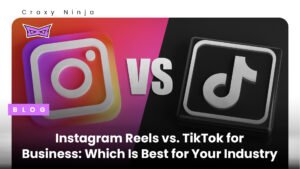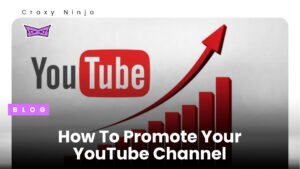Influencer marketing has emerged as a powerful strategy for businesses to connect with their target audience in a more authentic and engaging way over the past few years.
But what exactly is influencer marketing, and how can businesses effectively harness its potential to achieve their marketing goals?
Let’s cruise into the world of influencer marketing, exploring its definition, strategies, tools, case studies, metrics, and best practices to help you navigate this dynamic landscape.
What is Influencer Marketing?
Let’s start with the basics. Influencer marketing is a type of marketing that leverages individuals with a significant online presence and a dedicated following (i.e., influencers) to promote products or services to their audience.
These influencers are often experts in their niche and have the ability to sway the purchasing decisions of their followers.
Influencer marketing is all about building trust and credibility by associating your brand with influencers who resonate with your target audience.
Influencer Marketing Strategy
Creating a successful influencer marketing strategy is key to reaping the benefits of this marketing approach. Here are some fundamental influencer marketing strategies to consider:

Identify Your Goals
Begin by defining your objectives. Do you want to increase brand awareness, drive website traffic, or boost sales? Understanding your goals will help you choose the right influencers and measure the success of your campaigns.
Target the Right Audience
Knowing your target audience is essential. Collaborate with influencers whose followers align with your ideal customer demographics and interests.
Select the Right Influencers
Choose influencers whose values and content align with your brand. Micro-influencers (those with smaller but highly engaged followings) can be particularly effective for niche markets.
Create Authentic Content
Encourage influencers to create authentic content that resonates with their audience. Overly promotional posts may be off-putting.
Compensate Fairly
Offer fair compensation to influencers. Compensation can be monetary, free products, or other mutually beneficial arrangements.
Influencer Marketing Tools
To execute your influencer marketing strategy effectively, you will need the right tools. Here are some popular influencer marketing tools to consider:
Influencer Discovery Tools
Platforms like AspireIQ, Upfluence, and Traackr help you find and connect with relevant influencers based on your criteria.
Content Management Tools
Tools like Buffer and Hootsuite can assist in scheduling and managing influencer-generated content.
Analytics Tools
Tools like Google Analytics and social media insights provide valuable data to measure the impact of your campaigns.
Campaign Management Platforms
Platforms like Influencity and Grin streamline the entire influencer marketing process, from finding influencers to tracking results.
Influencer Marketing Case Studies
Let’s explore some real-world examples of successful influencer marketing campaigns:
Daniel Wellington
The watch brand partnered with micro-influencers on Instagram, resulting in massive brand exposure and a surge in sales.
Coca-Cola
Coca-Cola’s “Share a Coke” campaign involved printing common names on their bottles and encouraging people to share photos with their personalized Coke. This user-generated content approach saw widespread participation and increased brand engagement.
Nike
Nike’s collaboration with athlete influencers like LeBron James and Serena Williams not only boosted their brand but also helped drive the conversation around important social issues.
Influencer Marketing Metrics
Measuring the success of your influencer marketing campaigns is crucial. Here are some key metrics to track:
Engagement Rate
This measures the level of interaction on influencer posts, including likes, comments, and shares.
Click-Through Rate (CTR)
CTR tells you how many people clicked on the links shared by influencers to visit your website or landing page.
Conversion Rate
This metric indicates how many of the visitors from influencer posts turned into paying customers.
Return on Investment (ROI)
ROI calculates the profitability of your influencer marketing campaigns, taking into account both costs and revenue generated.
Follower Growth
Track the growth in your social media followers as a result of influencer collaborations.
Influencer Marketing Best Practices
To ensure the success of your influencer marketing campaigns, follow these best practices:
Transparency
Ensure that influencers disclose their partnerships with your brand to maintain trust with their audience and comply with regulations.
Creative Freedom
Give influencers creative freedom to maintain authenticity in their content.
Long-Term Partnerships
Consider long-term partnerships with influencers to build lasting relationships and brand loyalty.
Diversify Platforms
Explore various social media platforms and content formats to reach a broader audience.

Monitor and Adjust
Continuously monitor campaign performance and be ready to adjust your strategy based on results.
Influencer marketing is a dynamic and effective strategy for businesses looking to connect with their target audience in a genuine and impactful way. By defining clear goals, collaborating with the right influencers, using the appropriate tools, and measuring campaign metrics, you can harness the power of influencer marketing to achieve your marketing objectives. Remember that authenticity and transparency are key to building trust with both influencers and their followers, ultimately leading to successful and profitable partnerships. So, go ahead, dive into the world of influencer marketing, and watch your business thrive in the digital age.








